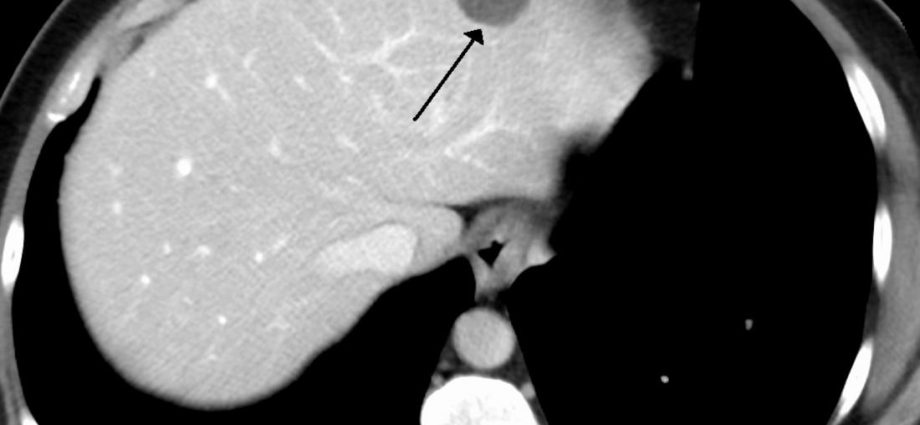Contents
What is liver hemangioma
Hemangioma (also known as angioma) of the liver is a benign tumor that consists of clusters of small vascular cavities filled with blood.
This diagnosis is 5% of the adult population. These neoplasms are more common in adults than in children: the typical age of patients is 30-50 years. Liver hemangiomas are more common in women than in men.
Most liver hemangiomas do not cause symptoms, although larger lesions that press on tissue can cause poor appetite, nausea, and vomiting.
As a rule, the patient develops only one hemangioma, but in some cases there may be several. Hemangiomas do not develop into cancer and do not spread to other parts of the body.
Causes of liver hemangioma in adults
Why a hemangioma forms in the liver is not known for certain. But anecdotal studies suggest certain defective genes may be the cause. There are suggestions that a role in the development of the tumor can play:
- long-term steroid therapy for diseases or for building muscle mass;
- prolonged use of birth control pills;
- pregnancy.
Symptoms of liver hemangioma in adults
Most hemangiomas of the liver do not cause any unpleasant symptoms, they are discovered when the patient is examined for another disease.
Small (a few millimeters to 2 cm in diameter) and medium (2 to 5 cm) do not heal, but should be monitored regularly. Such monitoring is necessary because about 10% of hemangiomas increase in size over time for unknown reasons.
Giant liver hemangiomas (greater than 10 cm) usually have symptoms and complications that require treatment. Symptoms most often include pain in the upper abdomen as the large mass presses on the surrounding tissue and the liver capsule. Other symptoms include:
- poor appetite;
- nausea;
- vomiting;
- a quick feeling of satiety while eating;
- feeling bloated after eating.
Liver hemangioma may bleed or form blood clots that retain fluid. Then there is pain in the abdomen.
Treatment of liver hemangioma in adults
Smaller hemangiomas do not need treatment, but relatively large tumors sometimes require surgery.
Diagnostics
There are a number of tests that help distinguish liver hemangioma from other types of tumors:
- contrast-enhanced ultrasound – high-frequency sound waves pass through the tissues of the body, and the echoes are recorded and converted into video or photographs;
- computed tomography (CT);
- magnetic resonance imaging (MRI);
- angiography – a contrast agent is injected into the vessels to look at them under X-ray irradiation;
- scintigraphy is a nuclear scan that uses the radioactive isotope technetium-99m to form an image of a hemangioma.
Modern treatments
Some hemangiomas are diagnosed at birth or in early childhood (up to 5-10% of one-year-old children). The hemangioma usually shrinks over time and in some cases may disappear. If it is small, stable, and does not cause any symptoms, it can be monitored with imaging studies every 6 to 12 months.
There are no drugs for the treatment of liver hemangioma. Surgery may be required to remove the tumor if it is growing rapidly or causing significant discomfort or pain. A technique called vascular embolization, which cuts off the blood vessels that feed the hemangioma, can slow or reverse its growth.
Prevention of liver hemangioma in adults at home
Since the cause of liver hemangiomas is unknown, they cannot be prevented.
Popular questions and answers
We asked to answer questions about hemangioma of the liver X-ray endovascular surgeon Alexander Shiryaev.
In a more difficult situation, the specialist will select hormonal therapy, radiation therapy or surgery.










